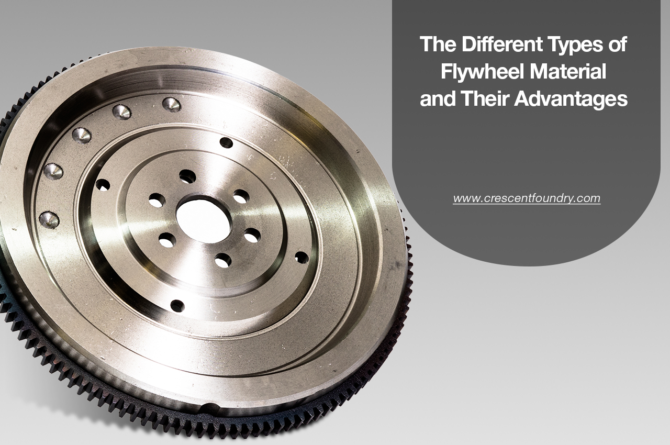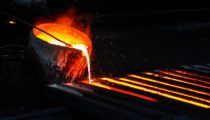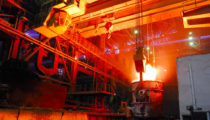The value of the worldwide forklift market stood at around…

The Different Types of Flywheel Material and Their Advantages
A flywheel is a mechanical device that stores rotational strength by utilising the preservation of bent impetus. It is a heavy circular plate-like construction, namely affiliated to the output rod of a motor, and is secondhand for various purposes, to a degree smoothing capacity amounts in equaling engines, strength depository, transferring strength at higher rates than the beginning, and ruling the adjustment of a mechanical scheme utilising a gyrator and backlash wheel. In the competitive market for technical equipment, flywheel manufacturers play an important role in guaranteeing effective strength storage and smooth, capable rotation.
Understanding the Significance of Flywheel Material Choice
Flywheels play a lively role in industrialized orders, finding requests across various areas like automotive, oil and smoke, farming, off-freeway movements, warehousing, and comprehensive modern habits. Their original purpose remains intact even as they have progressed. The choice of the appropriate material for assembling flywheels holds immense significance in guaranteeing singular efficiency and longevity, particularly inside the lubricant and vapour industries.
However, the dimension of high-strength mass flywheels has visualised the rise of carbon fibre composites as a material of choice. These leading flywheels engage attractive bearings, and permissive ruling classes to gain surprising speeds of up to 60,000 RPM. The distinguishing stiffness of a flywheel is a limit defined as a percentage of the ring stress to the material density, further separated for one bulk. Optimal strength storage for one bulk depends on the flywheel material possessing the highest distinguishing stiffness. This principle underlines the appeal of elemental fibre, which garners consideration for its hopeful attributes.
Here are a few things to consider while picking the finest flywheel material:
- Weight: The burden of a flywheel is a critical determinant to judge when selecting fabrics, as it directly impacts the act. Conventional flywheels accompanying a standard pressure enhance drivability, while opting for lightweight substitutes can considerably upgrade overall performance.
- Performance: Optimal flywheel material election is the key to achieving both souped up and grit. The choice of material depends on the request, with the basic aim of maximising stocked energy for one capacity. This option process aims to achieve a balance between financial gains and material possessions.
- Durability: Flywheels usually utilise fortified construction and alternately utilise standard significance, often confining their maximum capability of rotating speed to any thousand RPM. To guarantee durability, extreme-substance girds are frequently preferred on account of their superior tensile strength and disintegration resistance. This material choice provides for the overall durability of the flywheel in different applications. Different matters have their own set of pros and cons Although cast iron is budget-friendly, it lacks strong stiffness. Conversely, extreme-strength girds are loiter-unending and bouncy against corrosion, although at a larger cost. GFRP (graphite fibre-supported polymer) is deliberately the optimum choice for thinking out flywheels for contemporary instruments and debris honest by extreme temperatures.
Carbon Fibre: The future of flywheel electronics
Flywheel energy depository machines offer a hopeful approach to gathering power in the form of moving power. Typically to a degree machinelike batteries, these flywheels consist of a bulk whirling about a main axis. The discovery of extreme-substance, reduced-density element fibre composites (CFCs) all along the 1970s rekindled excitement for flywheel strength depository. Predominantly moulded from elemental fibres due to their superior attributes, though alternative renditions engaging grain fibres endure. Notably, carbon fibre rotors can maintain speeds of up to 30,000 rotations per minute.
The best-known flywheel strength depository order on the planet surrounds 200 elemental fibre flywheels inside a vacuum room, allowing a constant discharge of 1 megawatt for 15 minutes.
Choosing the Right Flywheel Materials for Your Needs
When picking high-quality material for a flywheel, there are various facets to analyse. The option of flywheel material can significantly impact your bicycle’s accomplishment, ease of use, and overall security.
Here are some well-known flywheel materials and their characteristics:
1. Cast Iron (Grey and Nodular)
- Average pressure: 11.34-18.14 kilogrammes
- Suitable for pavement, truck, off-expressway, and normally aspirated drag applications
- Provides superior persistence and heat wantonness
2. Billet Steel:
- Average burden: 11.34-18.14 kilogrammes
- Commonly used in extreme-conduct uses
- Offers excellent substance and stamina
3. Billet Aluminum:
- Lightweight flywheel material
- Average burden: 6.35-9.53 kilogrammes
- Provides a high substance-to-burden percentage
4. Chromoly:
- Average burden: 6.35-9.53 kilogrammes
- Offers a lightweight alternative for reinforced depiction
5. Ductile Iron:
- Used in sectors in the way that automobiles, trains, lubricate and vaporise for smooth movements
- Provides excellent substance-to-pressure percentage
Investing in the right material for flywheels
Investing in the correct flywheel material is essential for growing the productiveness and efficiency of a flywheel method. The choice of material can impact the strength, density, burden, and overall accomplishment of the flywheel.
Keep Reading: Types Of Flywheels And Their Usage
Here are various factors to consider when selecting a flywheel material:
- Energy Density: Utilising composite materials to a degree with element fibres in the explanation of flywheels offers a notable edge over brace variants in terms of strength deposition per mass. This profound strength bulk facilitates the memory of the best strength competencies within a shortened and easier flywheel.
- Weight: The flywheel’s mass has a two-fold effect on both allure rotational lifelessness and strength depository skill. Lighter materials like composites can yield better potential for strength deposition while simultaneously reducing the overall burden of the flywheel.
- Strength and Durability: Flywheels moulded from composite materials like detail fibres have an important advantage relative to their brace matches in terms of strength, density, and piece stress. This advanced power mass empowers the depository of higher strength within a sleeker and much less troublesome flywheel.
- Friction and Heat Resistance: The ideal material should exhibit belittled friction properties to minimise strength wantonness resulting from frictional forces. Furthermore, it manifests wonderful heat resistance to withstand the warm belongings created along its functional eras.
- Cost: Evaluating material expenses holds paramount significance as it can influence the overall payment of the flywheel arrangement. While composite materials offer acting benefits, they tend to entail higher costs compared to established materials like braces.
Top Flywheel Companies From India are coming up with fresh ideas to show off how well these things work. Aspects like desired strength, depository ability, turning speed, and operational environments must be considered when selecting the appropriate material.
Selecting the right flywheel material isn’t just a choice but an investment in strength. Careful evaluation across essential limits guarantees an optimum conclusion that enhances flywheel accomplishment, adeptness, and durability.





